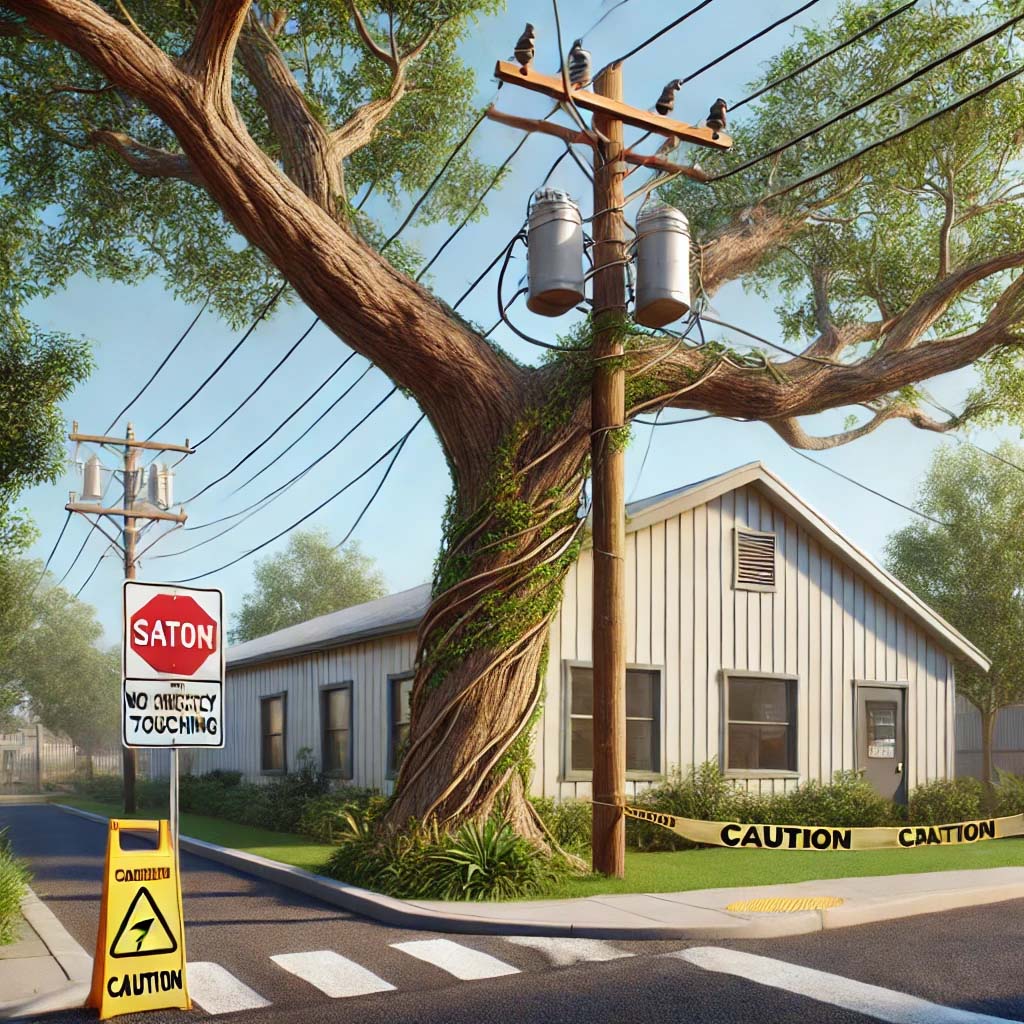When trees come into contact with power lines, they create serious risks for your business’s safety, energy reliability, and compliance. This issue can lead to power outages, pose fire hazards, and jeopardize employee and customer safety. Here’s a step-by-step guide on what to do if you notice a tree near or touching a power line on your business property.
1. Assess the Situation from a Safe Distance
- First, maintain a safe distance from the tree and power line. Electricity can travel through branches, so avoid any direct contact with the tree or line.
- Look for signs of electrical issues, like sparks, burning smells, or damaged power lines, as these indicate urgent safety risks.
2. Contact Your Local Utility Company
- Don’t try to trim the tree yourself—doing so can be extremely dangerous and is often illegal. Instead, report the issue to your local utility company.
- Most power companies have specialized crews trained in safely managing vegetation near power lines. In many cases, they’ll send a team to evaluate the situation and trim the tree if needed.
3. Understand Tree-Trimming Regulations
- Regulations about trees near power lines vary by location. Commercial properties are often required to maintain trees to prevent contact with utility lines. However, power companies usually have the authority to trim trees that directly threaten power lines.
- When possible, consider hiring a certified arborist with electrical hazard training. They’ll have the knowledge and equipment to maintain trees safely near power lines.
4. Implement a Routine Maintenance Plan
- Preventing trees from reaching power lines is much easier than dealing with the hazard once it’s present. Establish a tree maintenance schedule, especially if your property has fast-growing trees.
- Work with landscaping professionals who can assess the placement and growth patterns of your trees, helping prevent future risks.
5. Explore Alternatives for High-Risk Areas
- Consider replacing high-risk trees with ones that grow more slowly or have a shorter maximum height. Planting low-growing shrubs or bushes near power lines may help you avoid similar problems in the future.
- Local utility companies often offer advice on what tree types work best near power lines, allowing you to create a safer and more reliable landscape.
Why Proactive Management Matters
A tree touching a power line can disrupt your business and cause costly downtime. In extreme cases, electrical fires and accidents can lead to property damage, liability issues, and even injuries. By addressing this risk promptly and setting up regular tree maintenance, you’ll help protect your business and ensure the safety of everyone on-site.
Conclusion
A tree touching a power line isn’t just a minor landscaping issue—it’s a hazard that requires immediate attention. By following the steps outlined above, your business can stay safe and compliant. Taking preventive action today will protect your employees, customers, and assets tomorrow.





